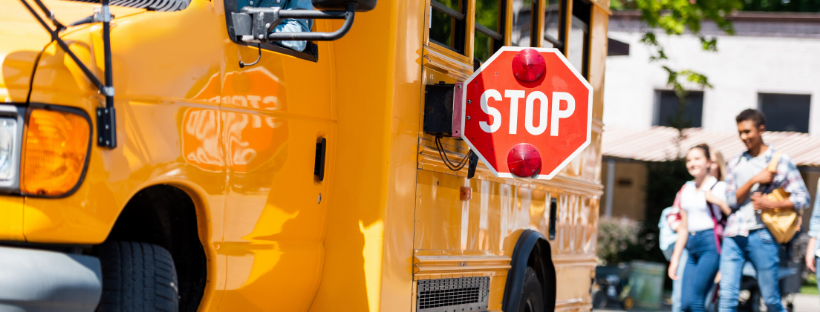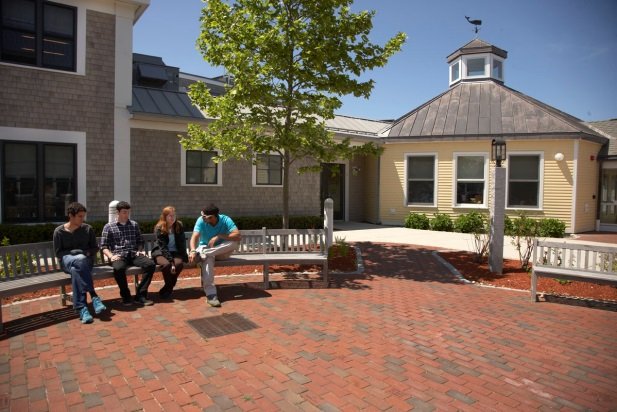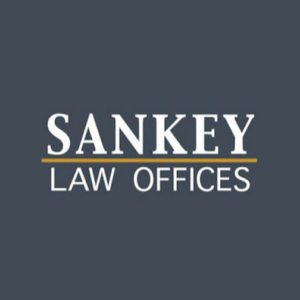

DESE Issues Guidance Instructing School Districts to Prioritize Students with Disabilities
The beginning of the new school year will mark changes in how school districts must provide services to special education students during COVID-related school closures. The Department of Elementary and Special Education’s (“DESE”) most recent guidance related to students with special needs and the COVID-19 pandemic instructs school districts to prioritize providing in-person services during the 2020-21 school year to students with disabilities – particularly preschool age students and students with significant and complex needs. The rationale behind this guidance is that these students have a more difficult time accessing remote instruction than other students. In its guidance, DESE defines “students with complex and significant needs” as: Students already identified as “high needs” through the IEP process on the IEP form entitled “Primary Disability/Level of Need-PL3.” Such students must meet at least two of these criteria: Services provided outside of the general education classroom Service providers are special education teachers and related service providers; Special education services constitute more than 75% of the student’s school day; Students who cannot engage in remote learning due to their disability-related needs; Students who primarily use aided and augmentative communication; Students who are homeless; Students in foster care or congregate care; and/or Students dually identified as English Learners. DESE emphasizes that school districts must first attempt to provide full-time in-person instruction for these students, even if the rest of the school has entered into a hybrid or remote model of instruction. In the event that this level of service is not possible, DESE stresses that school districts should provide as many in-person services to these students as possible in school on a part-time basis, and, where possible, provide the remainder of the services in-person in the home or community setting. DESE also clarifies that during the 2020-21 school year school districts must provide students with all services documented in their IEPs – whether through in-person instruction, remote instruction, or a combination of both, with a strong emphasis on providing in-person instruction to the greatest extent possible, while abiding by the current necessary health and safety requirements. Additionally, while DESE had advised school districts in the Spring of 2020 that they could satisfy the requirement to provide a free and appropriate public education (“FAPE”) during remote learning through a Resources and Supports model (i.e. sending packets and assignments home coupled with frequent communication with parents), DESE has revised its position for the 2020-2021 school year. DESE now instructs school districts that they must be prepared to provide remote learning to students with special needs through the “Instruction and Services” model (i.e. structured learning time, teletherapy and video conferencing). The “Resources and Supports” delivery model can only be used on a temporary basis for no more than two weeks upon return to school. DESE’s guidance can be found here: http://www.doe.mass.edu/sped/ If you have any questions about information contained in the guidance, or other concerns related to the provision of special education services during this pandemic, please give us a call. We, like you, are in new
Read More
COVID-19 Update: As School Closures Extend Across Massachusetts, DESE Amends Guidance to School Districts
First and foremost, we hope you are feeling healthy, safe, and cared for. This cannot be reiterated enough: these are truly unprecedented times, and this is unchartered territory. Every day the US Department of Education (USDOE) or the MA Department of Elementary and Secondary Education (DESE) is sending out new guidance for school districts during school closures. We are monitoring it carefully and are here to answer any questions you may have. As school closures extend in Massachusetts, DESE has shifted its guidance for all school districts across the state. Originally, the guidance was for schools to prioritize the most immediate health and safety concerns within their community: making sure that all students who needed it had access to food and nutrition (about half the students in the state rely on breakfast, lunch, and/or dinner at school). Once that was up and running, schools were advised to reach out to students and families and provide access to educational resources to students. From what we are hearing, our clients have been provided various educational resources by their district over the last couple of weeks. On March 25, 2020, Governor Baker extended school closures until at least May 4, 2020, and this prompted DESE to advise schools that the expectations have now increased since students will be out of school longer than the originally planned three weeks. On Thursday, DESE provided new guidance to school districts in response to this extended closure (as well as in response to updated guidance from the USDOE that was issued on March 21, 2020). DESE is now recommending that school districts move to providing remote learning opportunities for their students. Because DESE is not mandating specific ways to do this, it will look different for all schools. DESE makes it clear that this type of learning will not replace the valuable in-person instruction that happens under normal circumstances; it is not ideal for anyone— students, parents, teachers, or administrators. However, DESE is asking that everyone involved try their best given the restrictions we are all facing right now. DESE has asked that schools now shift to providing a free appropriate public education (FAPE) to students with disabilities. DESE states “The determination of how FAPE is to be provided may need to be different in this time of unprecedented national emergency.” Districts should prioritize the critical skills that students need to prevent regression. DESE is asking that parents/families be flexible because strict IEP compliance will not be possible during this time. Over the next few weeks, we expect that districts across the state will start to provide more structured learning opportunities for students, including students with disabilities and ELL students. Given this sudden shift in expectations during these unprecedented times, however, this will not happen overnight. Most districts are not prepared for this and face many hurdles to make this type of learning happen for its students. We encourage you to be patient and recognize that this is new for everyone (including your child’s teachers or service
Read MoreCOVID-19 Update: Supplemental Guidance from the U. States Department of Education
Since our blog post last week, the United States Department of Education (DOE) has published updated guidance for school districts and families nationwide relating to providing meaningful educational opportunities to all students, with and without disabilities. DOE issued this updated guidance in an effort to clarify “a serious misunderstanding” in the educational community that school districts should not provide any distance instruction during COVID-19 closures. This misunderstanding seems to stem from fear of being unable to meet the federal requirement of providing all students, with and without disabilities, with access to distance learning. Instead, DOE emphasizes that federal disability laws “should not prevent any school from offering educational programs through distance instruction.” It highlights that school districts are allowed flexibility when determining how to meet the needs of students with disabilities. While federal disability laws require equal access to offered instruction, it does not require that instruction to be provided to disabled and non-disabled students via one specific methodology. Rather, if students with disabilities are unable to access distance instruction via the methodology offered to students without disabilities, school districts may satisfy federal disability laws by providing access to instruction via alternative methodologies. Examples of alternative methodologies include teletherapy, tele-intervention, instructional packets, projects, and written assignments, to name a few. The DOE also emphasizes the importance of school districts and families working collaboratively around IDEA timelines during this unprecedented time, including but not limited to timelines for eligibility determinations, due process hearings, annual review meetings and reevaluations. If you have any questions relating to DOE’s most recent guidance or other special education issues, please reach out. Stay healthy and safe.
Read More
COVID-19 Update from Sankey Law Offices
We hope you are all staying healthy and safe. What a crazy time. We are certainly in uncharted territory right now and everyday things seem to be changing drastically. The Department of Elementary and Secondary Education (DESE) is trying hard to provide updated guidance for school districts in accordance with the requirements that are being issued locally and nationwide. Our office is monitoring everything from DESE and the US Department of Education and are happy to answer any questions you have or brainstorm with you. In short, Governor Baker ordered all Massachusetts public and private schools to close down as of March 17, 2020 until April 7, 2020. As a result, schools are currently trying to determine what, if any, learning opportunities students will receive while schools are closed. There is currently no federal or state mandate for schools to provide any education to students during this time. However, in Massachusetts, DESE is recommending that schools provide students access to educational resources. Schools are not required – and it is not recommended by DESE – that schools try to provide educational opportunities equivalent to an actual school day (for example- many colleges are providing virtual classes or switching to online classes for the rest of the school year and DESE is not recommending this at this time). This is the same for special education services, meaning schools are not required to provide a free appropriate public education or individual services to special education students while out of school (unless schools provide educational opportunities to general education students as described above). Instead, DESE wants students to continue the continuity of learning through access to educational resources. What this looks like is left for each school district to decide, so it will likely be different across the state and even different within individual districts, grades, and specific classes. If schools choose to provide access to educational resources to the general education population – which most are doing – they must also provide access to educational resources to special education students as well. Schools are also being encouraged to reach out to students in various ways to stay connected. It may be difficult to reach all students so DESE is encouraging schools to be creative and try their best. Once schools are back in session, there are some special education students who may require additional services because of this closure. Districts will need to review how the closure impacted its students and determine on an individual basis if some students require additional services as a result of this time being out of school. DESE recommends that IEP teams consider factors such as the student’s academic progress to date towards their IEP goals, the nature of the service(s) missed, the frequency of the service(s) missed, reports from providers, previous educational history, and history and concerns of substantial regression. This is not equivalent to “compensatory services” so not all students will be eligible for this. Other disruptions to note include team meetings, evaluations or reevaluations,
Read More
Special Education Decision Results in Placement at Riverview School
Sankey Law Offices recently prevailed in a hearing before the Bureau of Special Education Appeals which resulted in the placement of a 15 year old boy at Riverview School. The student, who presents with diagnoses of Autism Spectrum Disorder and an intellectual impairment, was placed in a partial inclusion program at Fairhaven High School. It was Fairhaven’s position that its program was appropriate because the student was able to access the general curriculum and was an active participant in his classes. Moreover, Fairhaven argued that the student loved to participate in band and that his removal from the community to attend a private school would deprive him of his independence and the ability to socialize with non-disabled peers. Over the course of a three-day hearing, the student’s parent was able to demonstrate that the student was unable to access grade level academics even with a dedicated paraprofessional. The parent also showed that Fairhaven had failed to provide recommended reading intervention and, most importantly, that the district ignored its obligation to embed social skills instruction throughout the student’s school day. Based in large part upon these deficiencies, the hearing officer ordered Fairhaven to fund the student’s placement at Riverview School. From our perspective, there are at least three important lessons from this case. First, the hearing officer was resolute in requiring that there be objective measures of performance to establish effective progress. The fact that the student appeared engaged and happy in general education classes was not enough to justify Fairhaven’s program. Instead, the hearing officer noted that the lack of objective measures – such as evaluations and data-driven assessments – undermined Fairhaven’s claim that the student was making effective progress. Most notably, the hearing officer rejected the notion that report cards and progress reports are sufficient to establish progress, describing them as little more than “subjective and global reports of class participation” rather than objective measures of academic progress. Second, the parent demonstrated that the student’s goals, objectives and benchmarks were largely unchanged over a three year period. The hearing officer noted, quite correctly, that the continued presentation of identical goals indicated that the student was not making progress. This is a clear reminder that, whether participating in a team meeting or reviewing an IEP, it is critical to pay attention to the goals and benchmarks in order to determine whether the student is truly progressing. Finally, as we always stress to our clients, the retention of highly qualified and articulate experts to evaluate and observe is essential to success at a hearing. In this case, the hearing officer credited and relied upon the parent’s expert to a very high degree in determining the student’s learning needs and in evaluating Fairhaven’s proposed program. We continue to believe that a case cannot be won in any hearing without highly competent and thoughtful expert testimony. The bar is always high when seeking an out-of-district placement for a student at a school district’s expense. This case illustrates the painstaking detail that is required
Read More


